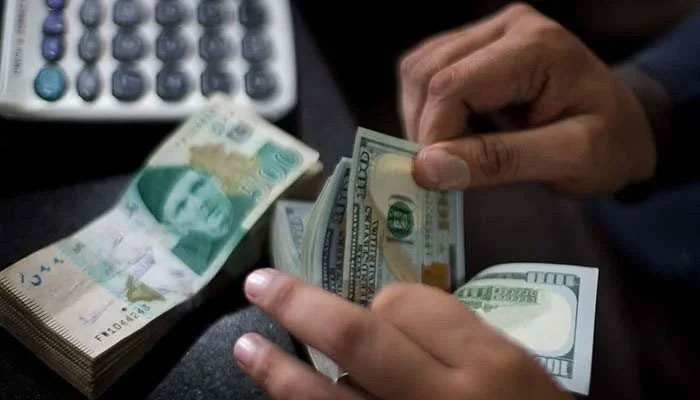Rupee's downward slide against dollar continues
Rupee falls by 0.24% on a day-to-day basis to reach a new all-time low of Rs201.41 against the dollar in interbank market
KARACHI: The Pakistani rupee continued its losing streak for the 14th straight day on Tuesday, plunging to a new record low at Rs201.41 against the US dollar in the interbank market.
As per the details, the local unit slid by 0.24% on a day-to-day basis to reach a new all-time low of Rs201.41 against the greenback in interbank trade.
It closed at Rs200.93 against the greenback on Monday, according to the State Bank of Pakistan (SBP).
The decline in the domestic currency’s value came after the political crisis deepened in the country on the back of the ongoing war between the PTI and coalition government regarding the formers ‘Azadi March’ toward Islamabad scheduled to begin tomorrow.
Moreover, news regarding delay in the talks between Pakistan and the International Monetary Fund (IMF) added fuel to the downtrend.
Since the beginning of this fiscal year (July 1, 2021) to date, the rupee has collectively dropped by a massive 27.84% (or Rs43.87) compared to the previous fiscal year’s close at Rs157.54.
The rupee has maintained a downward trend for the last 13 months. It has lost 32.27% (or Rs49.14) to date, compared to the record high of Rs152.27 recorded in May 2021.
The rupee was trading at 202 versus the greenback in the open market. It was sold at 201.80 in the previous session. The local unit has already been under severe pressure due to uncertainty about the revival of the IMF programme amid the lack of clarity on the government’s front to remove fuel and electricity subsidies.
However, Imran Khan’s call for a march to the capital city has resurfaced concerns about the political future of the country.
“Investors are very much worried about the economic and political outlook of Pakistan, hurting sentiment on the rupee,” a foreign exchange trader said.
Investors were also concerned about the country’s ability to meet its external obligations due to the persistent decline in the foreign currency reserves.
-
US lawmakers introduces new bill to define crypto market rules
-
Apple tops global smartphone market in 2025, says report
-
AI boom set to lift TSMC’s Q4 profit by 27%
-
An eye on 'global economic instability' as shares slumps, tensions intensify
-
Tesla dethroned: BYD shocks EV market as top seller in 2025
-
China sets up $8.9B fund to boost 2026 consumer goods trade-in
-
Meta to acquire Chinese AI startup Manus to expand advanced AI capabilities
-
China to roll out action plan for digital yuan expansion












